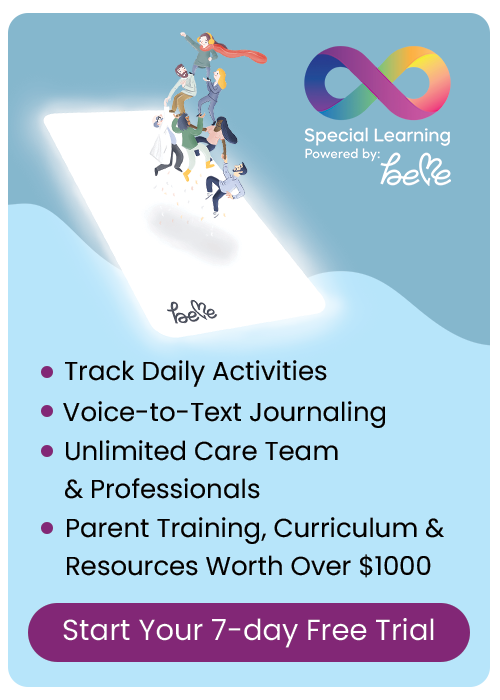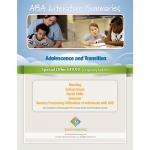Blog Categories
- ADHD
- Applied Behavior Analysis
- Autism Awareness
- Autism Service Providers
- Case Studies
- Dignosis
- Classroom Management
- Credentials
- Ethics
- Family Matters
- FAQs About LIVE Events
- Financial Planning
- Holiday Planning
- IEP's
- Panelists
- Private Equity in Autism & ABA Industry
- Psychopharmacology
- Sensory Processing Disorder
- Speech and Communication
- Subject Matter Experts
- Summer Planning
- Transition Planning
What is an HCBS Waiver? How do I get one? What services are available?
What is an HCBS Waiver? How do I get one? What services are available?
Looking for help in your home and with community events or outings for a loved one with mental illnesses, intellectual disabilities, and/or physical disabilities? A Home and Community-based Services (HCBS) Waiver is a Medicaid program that in general provides assistance with skill development, respite, transportation, and other services to help support the individual and their caregiver.
Section 1915(c) Home and Community-based Services (HCBS) Waivers provide opportunities for Medicaid beneficiaries to receive services in their own home or community. These programs serve a variety of targeted populations groups, such as people with mental illnesses, intellectual disabilities, and/or physical disabilities. HCBS first became available in 1983 when Congress added section 1915(c) to the Social Security Act, giving States the option to receive a waiver of Medicaid rules governing institutional care.
Within broad Federal guidelines, States can develop Home and Community-based Services Waivers (HCBS Waivers) to meet the needs of people who prefer to get long-term care services and supports in their home or community, rather than in an institutional setting. In 2009, nearly one million individuals were receiving services under HCBS Waivers.
Nearly all States and DC offer services through HCBS Waivers. States can operate as many HCBS Waivers as they want — currently, more than 300 HCBS Waiver programs are active nationwide.
– HCBS Waivers provide:
– long term care services in home and community based settings under the State’s Medicaid Program
States can offer a variety of services under an HCBS Waiver program.
Programs can provide a combination of standard medical services and non-medical services: Standard services include but are not limited to:
– case management (i.e., supports and service coordination), helps with assessing services and providers.
– homemaker personal care (HPC), service that supports an individual to develop skills and assistance in the home and community.
– home health aide, services that supports the medical needs of the individual
– personal care, similar to HPC but more focused on daily living skills and in home services.
– adult day health services, habilitation (both day and residential), day programs individuals can attend once they graduate from schooling.
– respite care, provides assistance and supervision in the home.
– States can also propose “other” types of services that may assist in diverting and/or transitioning individuals from institutional settings into their homes and community.
State HCBS Waiver programs must:
– Demonstrate that providing waiver services will not cost more than providing these services in an institution.
– Ensure the protection of people’s health and welfare.
– Provide adequate and reasonable provider standards to meet the needs of the target population.
– Ensure that services follow an individualized and person-centered plan of care.
Who can get an HCBS Waiver:
– This waiver enables States to tailor services to meet the needs of a particular target group. Within these target groups, States are also permitted to establish additional criteria to further target the population to be served on an HCBS Waiver (e.g., target by age or diagnosis such as autism, epilepsy, cerebral palsy, traumatic brain injury, HIV/AIDS; etc.). Eligible individuals must demonstrate the need for a Level of Care that would meet the State’s eligibility requirements for services in an institutional setting. States choose the maximum number of people that will be served under an HCBS Waiver program.
Many states have very long waitlist to receive an HCBS Waiver.
– The number of HCBS Waiver slots per state is based on the states level of matching funds they have designated in their state budget. A state provides or matches 40% of the cost of the waiver and the federal government pays 60%.
– You will be placed on the waitlist based on the date you signed up for the waiver.
– Most states offer waitlist designations like emergency and priority status. These designations assure those individuals that pose an extreme health and safety risk, those in crisis, or individuals who live with an aging caregiver are given waivers before others not posing extreme health and safety risks.
– Request an HCBS Waiver through the state department that provides services to individuals with intellectual, developmental and physical disabilities. Unfortunately each state department’s name or title is different in each state.
To find your states HCBS Waiver check out the below website. Click on the waiver name and you will see the services provided under that waiver:
http://www.medicaid.gov/Medicaid-CHIP-Program-Information/By-Topics/Waivers/Waivers.html?filterBy=1915(c)#waivers
Information about all types of waivers:
Waivers are vehicles states can use to test new or existing ways to deliver and pay for health care services in Medicaid and the Children’s Health Insurance Program (CHIP). There are four primary types of waivers and demonstration projects:
– Section 1115 Research & Demonstration Projects: States can apply for program flexibility to test new or existing approaches to financing and delivering Medicaid and CHIP.
– Section 1915(b) Managed Care Waivers: States can apply for waivers to provide services through managed care delivery systems or otherwise limit people’s choice of providers.
– Section 1915(c) Home and Community-Based Services Waivers: States can apply for waivers to provide long-term care services in home and community settings rather than institutional settings.
– Concurrent Section 1915(b) and 1915(c) Waivers: States can apply to simultaneously implement two types of waivers to provide a continuum of services to the elderly and people with disabilities, as long as all Federal requirements for both programs are met.
More detail about each waiver:
1115 Waivers:
– Section 1115 waivers give states flexibility to design and improve their Medicaid and CHIP programs. Waivers let states test new or existing ways to deliver and pay for program coverage.
– Waivers must be “budget neutral” to the federal government. The state must show that over the duration of the entire waiver, the federal Medicaid expenditures will not exceed what the federal government would have spent without the waiver.
– Waivers are generally approved for a five-year period, but states typically submit renewal requests to continue the program beyond this time period. Waiver renewals are generally approved for three years.
– Not all states have this type of waiver
– Home and Community Based Waivers-1915 (c): see above
– Managed Care/Freedom of Choice Waivers-1915 (b):
– 1915(b) Waivers are one of several options available to states that allow the use of Managed Care in the Medicaid Program. When using 1915(b), states have four different options:
[1915(b) (1)] – Implements a managed care delivery system that restricts the types of providers that people can use to get Medicaid benefits.
[1915(b) (2)] – Allows a county or local government to act as a choice counselor or enrollment broker in order to help people pick a managed care plan
[1915(b) (3)] – Uses the savings that the state gets from a managed care delivery system to provide additional services.
[1915(b) (4)] – Restricts the number or type of providers who can provide specific Medicaid services (such as disease management or transportation).
Combined 1915 (b) / (c) Waivers:
– States can provide traditional long-term care benefits (like home health, personal care, and institutional services), as well as non-traditional home and community-based “1915(c)-like” services (like homemaker services, adult day health services, and respite care) using a managed care delivery system, rather than fee-for-service. They accomplish this goal by combining a 1915(c) waiver with a 1915(b) waiver (or any of the Federal authorities outlined in the Managed Care Delivery System section. The managed care delivery system authority is used to either mandate enrollment into a managed care arrangement which provides HCBS services or simply to limit the number or types of providers which deliver HCBS services.
– There are currently no waivers in this category.
Sources: Medicaid.Gov, http://www.medicaid.gov/Medicaid-CHIP-Program-Information/By-Topics/Waivers/Waivers.html?filterBy=(b)(c)#waivers
RECOMMENDED PRODUCTS
Adolescence and Transition Bundle
Interrupting Social Story Curriculum





